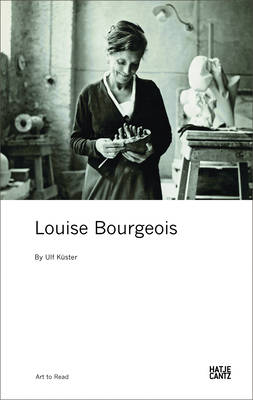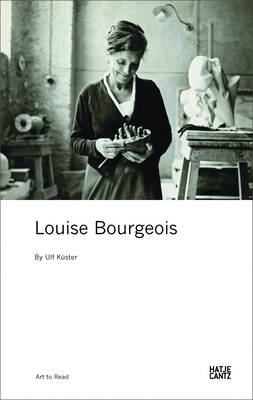
Door een staking bij bpost kan je online bestelling op dit moment iets langer onderweg zijn dan voorzien. Dringend iets nodig? Onze winkels ontvangen jou met open armen!
- Afhalen na 1 uur in een winkel met voorraad
- Gratis thuislevering in België vanaf € 30
- Ruim aanbod met 7 miljoen producten
Door een staking bij bpost kan je online bestelling op dit moment iets langer onderweg zijn dan voorzien. Dringend iets nodig? Onze winkels ontvangen jou met open armen!
- Afhalen na 1 uur in een winkel met voorraad
- Gratis thuislevering in België vanaf € 30
- Ruim aanbod met 7 miljoen producten
Zoeken
€ 15,95
+ 31 punten
Omschrijving
The recently deceased French-American sculptor Louise Bourgeois (1911-2010) was one of the most important artists of the last century. Her fleshy blobs, skeletal spiders and the aggressive fragility of her work offered a new solution to the antagonism between the figurative and the abstract that had previously been part and parcel of modernism. Bourgeois herself provided a unique interpretive level to modern art through the uses she made of childhood trauma, family life and sexuality. This accessible study serves as both an ideal introduction to the central themes of the late artist's oeuvre and as a commemoration of her one-hundredth birthday. Over the course of nine chapters, it examines her life, her exploration of the works of other artists and the transformation of her emotions into such works of art as the now iconic pieces "Destruction of the Father," "Fillette," "Cells" and "Maman."
Specificaties
Betrokkenen
- Auteur(s):
- Uitgeverij:
Inhoud
- Aantal bladzijden:
- 144
- Taal:
- Engels
- Reeks:
- Geïllustreerd:
- Ja
Eigenschappen
- Productcode (EAN):
- 9783775732277
- Verschijningsdatum:
- 31/03/2012
- Uitvoering:
- Paperback
- Formaat:
- Trade paperback (VS)
- Afmetingen:
- 117 mm x 188 mm
- Gewicht:
- 158 g

Alleen bij Standaard Boekhandel
+ 31 punten op je klantenkaart van Standaard Boekhandel
Beoordelingen
We publiceren alleen reviews die voldoen aan de voorwaarden voor reviews. Bekijk onze voorwaarden voor reviews.











